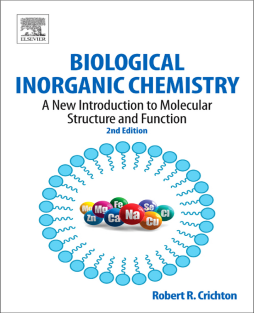
Additional Information
Book Details
Abstract
Biological Inorganic Chemistry: A New Introduction to Molecular Structure and Function, Second Edition, provides a comprehensive discussion of the biochemical aspects of metals in living systems. Beginning with an overview of metals and selected nonmetals in biology, the book then discusses the following concepts: basic coordination chemistry for biologists; structural and molecular biology for chemists; biological ligands for metal ions; intermediary metabolism and bioenergetics; and methods to study metals in biological systems. The book also covers metal assimilation pathways; transport, storage, and homeostasis of metal ions; sodium and potassium channels and pumps; magnesium phosphate metabolism and photoreceptors; calcium and cellular signaling; the catalytic role of several classes of mononuclear zinc enzymes; the biological chemistry of iron; and copper chemistry and biochemistry. In addition, the book discusses nickel and cobalt enzymes; manganese chemistry and biochemistry; molybdenum, tungsten, vanadium, and chromium; non-metals in biology; biomineralization; metals in the brain; metals and neurodegeneration; metals in medicine and metals as drugs; and metals in the environment.
- Winner of a 2013 Textbook Excellence Awards (Texty) from the Text and Academic Authors Association
- Readable style, complemented by anecdotes and footnotes
- Enables the reader to more readily grasp the biological and clinical relevance of the subject
- Color illustrations enable easy visualization of molecular mechanisms
"The writing of my colleague Bob Crichton is simply exquisite, clear and precise, yet light and pleasant...every chapter is a little story about the metal under consideration, with the hardcore chemistry and biochemical principles alternating with interesting anecdotes and beautiful illustrations and figures. I recommend [the book] wholeheartedly to students or researchers involved in chemistry, biochemistry, biology and medicine, and to anyone else who wishes to have a first contact with inorganic biochemistry. It is a must, and no lecture course in this area can afford not to use it." --Professor Istvan E. Marko, Universite Catholique de Louvain, Belgium
